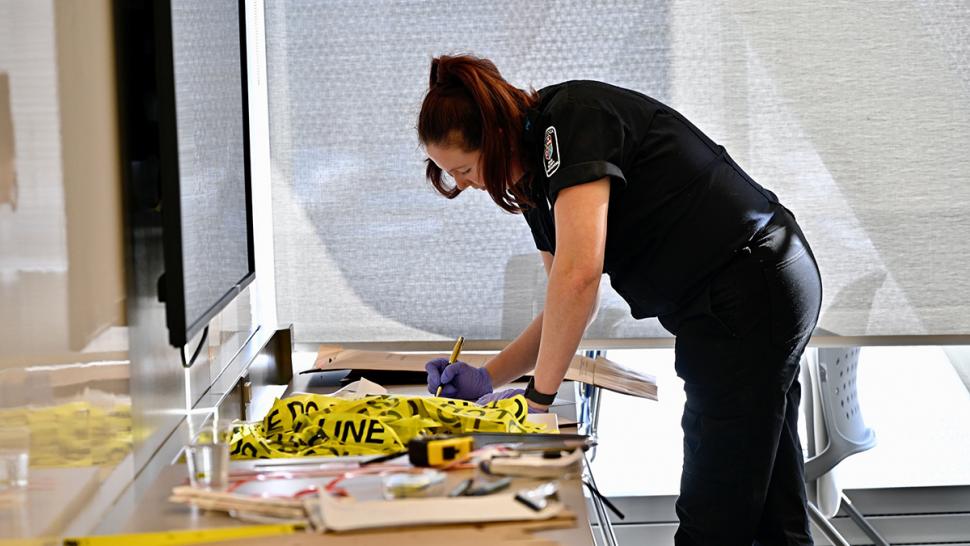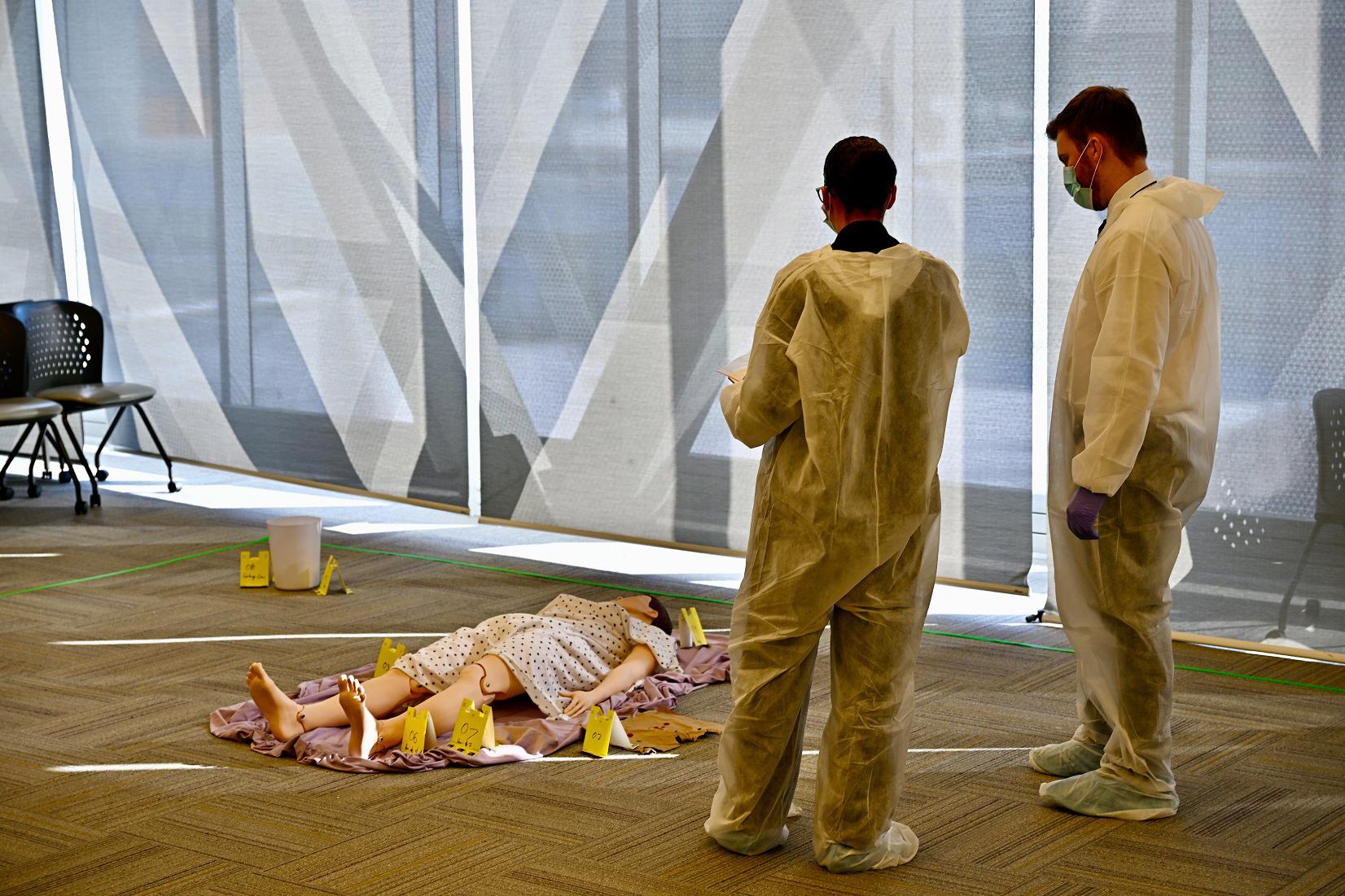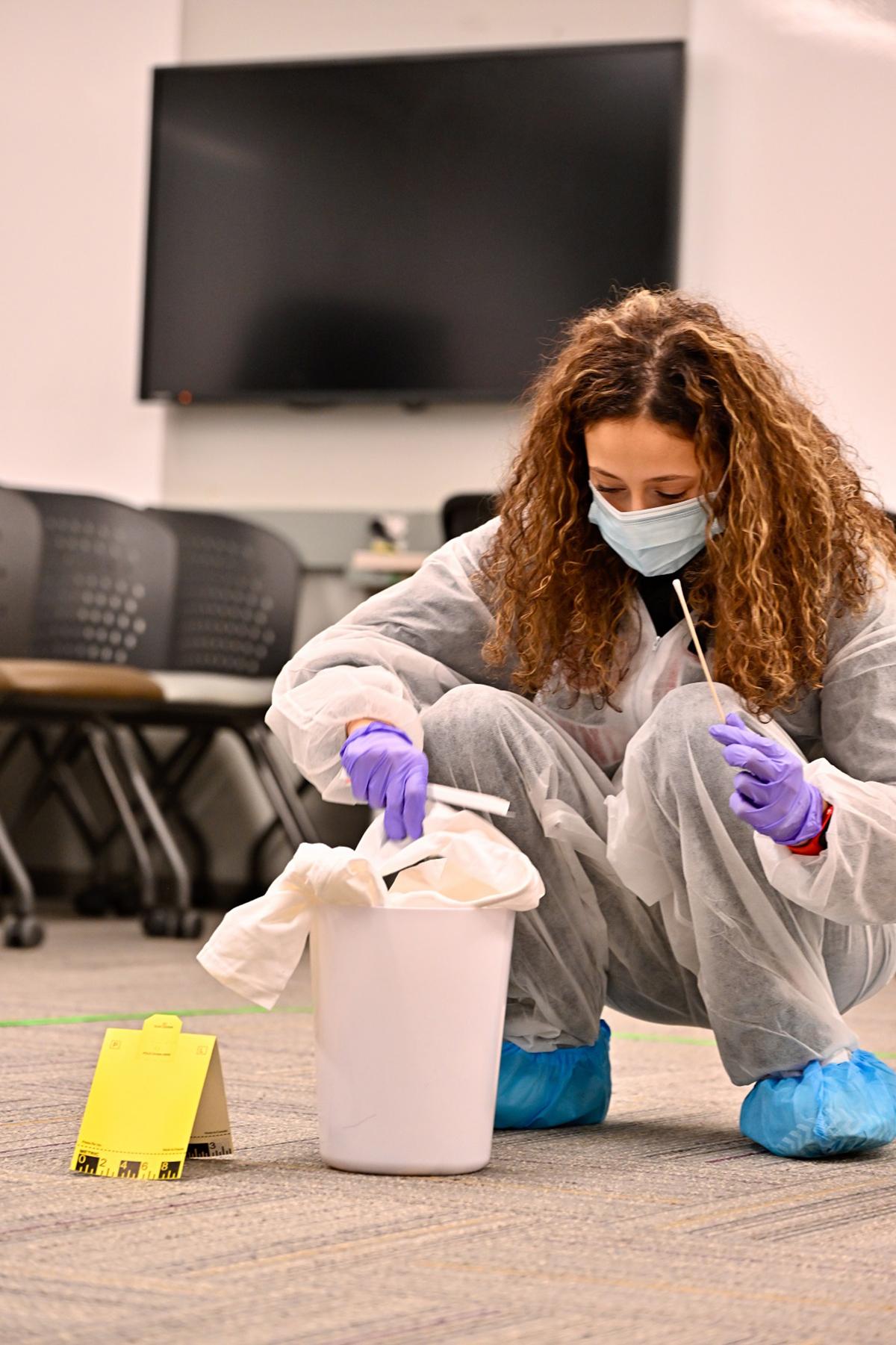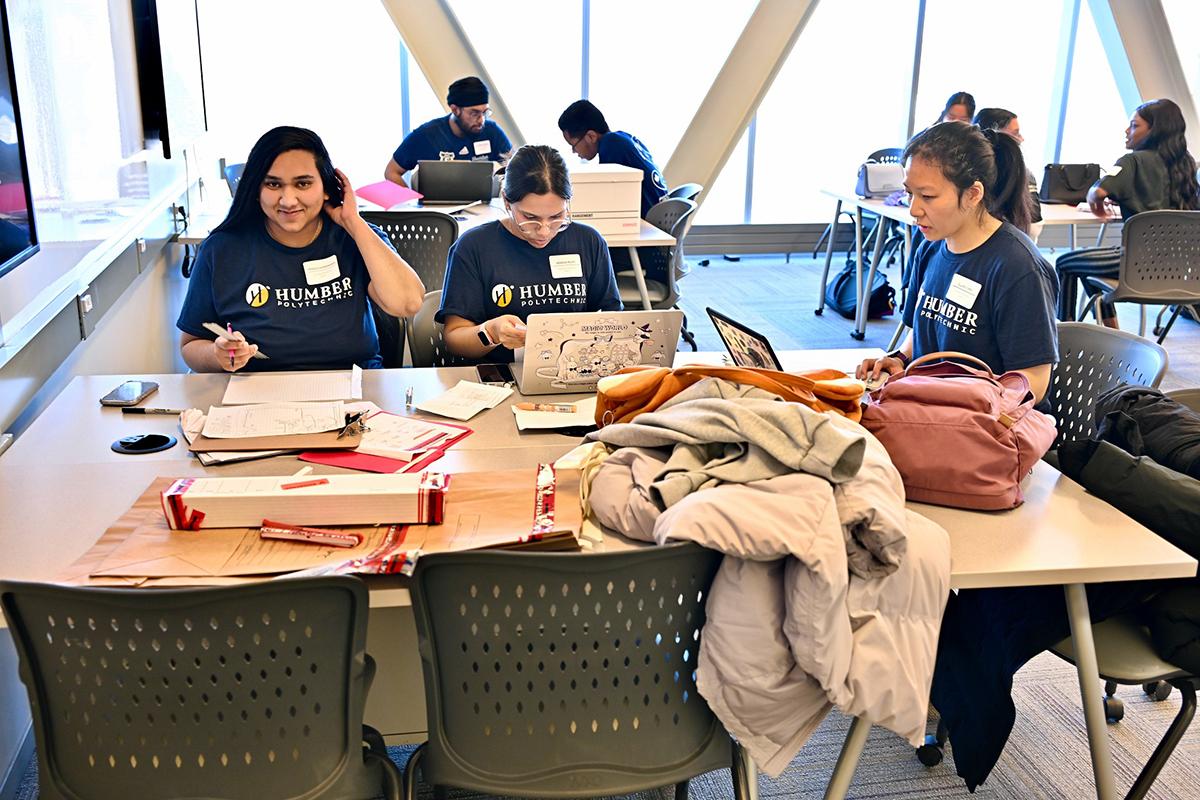
Students from eight Ontario post-secondary institutions, including Humber Polytechnic, Seneca Polytechnic, and the University of Guelph-Humber (UofGH), tested the real-world skills they have learned in the classroom at the second annual Crime Scene Investigation (CSI) Challenge, presented by Paragon Security along with additional donors and supporters.
This unique skills competition hosted by Humber Polytechnic was held at North Campus. It had students from undergraduate justice-related programs, such as Police Foundations, Bachelor of Social Science - Criminal Justice and Protection, Security and Investigation, from across Ontario competing against each other in teams of three to process a simulated crime scene, interview witnesses and submit case notes. The competition provided a realistic case investigation that helped students gain their edge by testing critical thinking, teamwork, crime scene proficiency, forensic knowledge, investigative interviewing skills and documentation abilities.

Students from Humber, UofGH, Seneca Polytechnic, Sheridan College, Georgian College, Mohawk College, Conestoga College and St. Clair College participated in the challenge.
In total the 2025 CSI Challenge provided justice students from across Ontario an experiential learning opportunity to put their skills into action through a high-fidelity simulation-based competition. In addition to the 45 student competitors from across the province, the Challenge also engaged an additional 53 student volunteers who participated as team mentors, event support, or as actors (from the Faculty of Media, Creative Arts, and Design) who played the role of persons of interest.
Inspired by a historical TPS cold case
The crime scene was inspired by a historical Toronto Police Service (TPS) cold case that had been solved. Participants were tasked with a series of activities, including evidence collection, crime scene mapping, witness interviewing, detailed documentation and report writing. Each of the 15 participating teams were equipped with investigative tools to navigate the complexities of the simulated crime scene with the aim of demonstrating their analytical and procedural competencies.
Judging them was a group of industry professionals and faculty members. At the end of the event, student competitors heard from the lead investigator from the TPS Homicide and Missing Persons Unit who presented a case study and debrief of the case.

“The event's format not only tested their technical skills but also emphasized the importance of collaboration, critical thinking and deductive reasoning,” said Debbie Harris, professor and program coordinator with Humber’s Forensic Identification program, the only one of its kind in Ontario. “The challenge provided invaluable experiential learning opportunities, bridging the gap between classroom theories and real-world applications. The success of this year's CSI Challenge underscores the commitment to provide platforms that foster practical skills and professional growth.”
Finishing first was a team from Seneca that included Sofia Baiocchi, Olivia Thompson-Broomes and Margaret Knott, all of whom are third-year students in the Crime Intelligence and Analysis program.
‘There’s a lot of value in taking part'
Austin Mercier is enrolled in Humber’s Protection, Security and Investigation program and was taking part in the CSI Challenge for a second year in a row. Mercier said his program provided him with the skills he needed to be successful in the competition and also for his future career, which he hopes is as an Ontario Provincial Police homicide detective.
His role on the team was as an interviewer and Mercier leaned heavily on the techniques he learned in class including the non-accusatory PEACE method that prioritizes obtaining accurate and reliable information from interviewees.
“This helped tremendously in building a rapport and effective communication with the witnesses,” said Mercier. “There’s a lot of value in taking part in the CSI Challenge – it allows us to understand the reality and professionalism that’s needed to solve a crime.”

Mercier added that having his participation in the CSI Challenge on his resume will also look good to potential employers and it was a great way for Humber to boost student engagement.
Nick Jankov is set to graduate from the Forensic Identification program and offered to serve as a mentor to a Humber team of Bachelor of Social Science - Criminal Justice students. Several other students in his program also served as mentors for other teams. Jankov said the CSI Challenge was a valuable chance for the students to interact with their peers in other programs, much like they will when they’ve entered the workforce.
“It was a really great learning experience that gave them a different way to look at what they’re learning and how to apply it,” said Jankov.
Find out more by visiting the Faculty of Social & Community Services website.
As part of Building Brilliance: Our Vision to 2030 and Beyond, we are shedding the traditional constraints of higher education and reimagining a model that both adapts to and shapes the world around us. By 2030, we will transform learning to completely reimagine the student’s educational journey by leveraging technology to achieve personalized, human-centred learning at scale. We are challenging the status quo to create a new education model for the world of today and tomorrow that will help students bridge their brilliant dreams with careers linked to strategic sectors critical to our labour market. By making bold decisions around how we fundamentally operate, we can reimagine learning, forge deeper partnerships and drive impact, creating real value and progress. This story is an example of how we are reimagining learning every day.